What Drives Auroras On Saturn? To Help Find Out, Scientists Have Sorted Through Hundreds Of Infrared

What drives auroras on Saturn? To help find out, scientists have sorted through hundreds of infrared images of Saturn taken by the Cassini spacecraft for other purposes, trying to find enough aurora images to correlate changes and make movies. Once made, some movies clearly show that Saturnian auroras can change not only with the angle of the Sun, but also as the planet rotates. Furthermore, some auroral changes appear related to waves in Saturn's magnetosphere likely caused by Saturn's moons. Pictured here, a false-colored image taken in 2007 shows Saturn in three bands of infrared light. The rings reflect relatively blue sunlight, while the planet itself glows in comparatively low energy red. A band of southern aurora in visible in green. In has recently been found that auroras heat Saturn's upper atmosphere. Understanding Saturn's auroras is a path toward a better understanding of Earth's auroras.
Image Credit: NASA, Cassini, VIMS Team, U. Arizona, U. Leicester, JPL, ASI
More Posts from Monstrous-mind and Others
🍂🍁🎃☠️

Autumn Garden by Boris Groh
🔭🌃🌌🛰
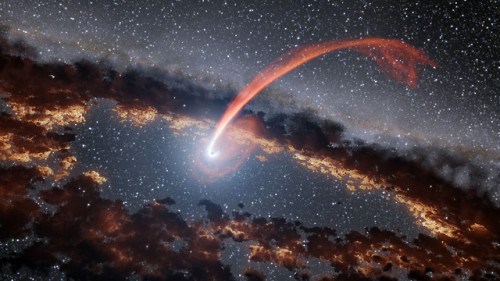
Astronomers Detect Matter Falling into Black Hole
University of Leicester’s Professor Ken Pounds and co-authors report the detection of matter falling into a black hole at 30% of the speed of light.

It is now well established that a supermassive black hole lies in the center of most galaxies, and further that it accretes matter through a disk.
With sufficient matter (interstellar gas clouds or even isolated stars) falling into the black hole, these can become extremely luminous, and are seen as a quasar or active galactic nucleus (AGN).

The orbit of matter around the black hole is often assumed to be aligned with the rotation of the black hole, but there is no compelling reason for this to be the case. In fact, the reason we have summer and winter is that the Earth’s daily rotation does not line up with its yearly orbit around the Sun.
Until now it has been unclear how misaligned rotation might affect the in-fall of matter. This is particularly relevant to the feeding of supermassive black holes since matter can fall in from any direction.

Using data from ESA’s XMM-Newton X-ray Observatory, Professor Pounds and colleagues looked at X-ray spectra from PG1211+143, a Seyfert galaxy (characterized by a very bright AGN resulting from the presence of the massive black hole at its nucleus) located in the constellation Coma Berenices, about one billion light-years away.

The team found the spectra to be strongly red-shifted, showing the observed matter to be falling into PG1211+143’s black hole at the enormous speed of 30% of the speed of light, or around 62,000 miles per second (100,000 km per second).
The gas has almost no rotation around the black hole, and is detected extremely close to it in astronomical terms, at a distance of only 20 times the black hole’s size (its event horizon, the boundary of the region where escape is no longer possible).
“The galaxy we were observing with XMM-Newton has a 40-million-solar-mass black hole which is very bright and evidently well fed,” Professor Pounds said.

“Indeed some 15 years ago we detected a powerful wind indicating the black hole was being over-fed. While such winds are now found in many active galaxies, PG1211+143 has now yielded another ‘first,’ with the detection of matter plunging directly into the black hole itself.”
“We were able to follow an Earth-sized clump of matter for about a day, as it was pulled towards the black hole, accelerating to a third of the velocity of light before being swallowed up by the hole.” source
What could ginger be thinking about?


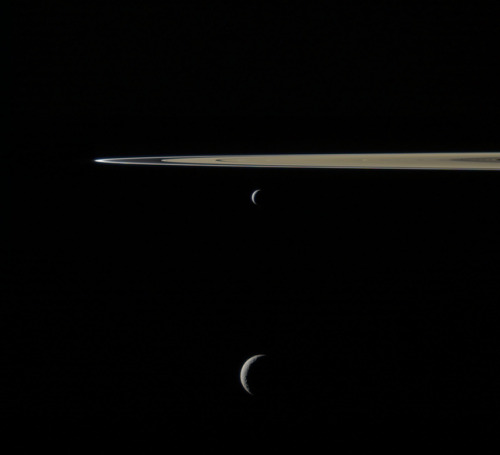
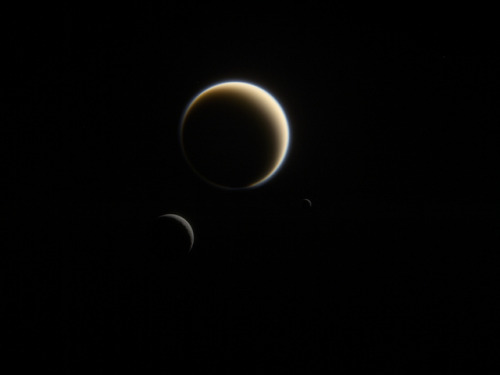
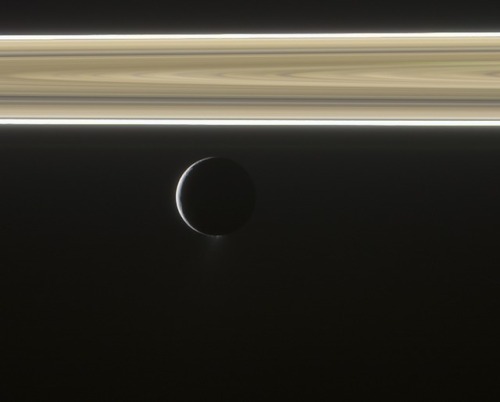
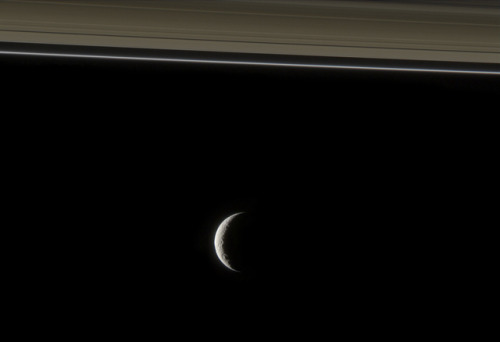
Saturn Rings and Moons: From left, the moons are Janus, Pandora, Enceladus, Mimas and Rhea. Following the images below, Enceladus and Tethys, Titan, Rhea and Mimas. Enceladus and Tethys.
by Gordan Ugarkovic
🍂🍁🍃








竹の寺 地蔵院 🍁紅葉2021🍁
Jizo-in temple
Ten interesting facts about Jupiter
Here is a list of some interesting facts about the planet Jupiter. A planet that catches the attention of all, by its size, storms and its surprising moons.

The mass of Jupiter is 318 times as massive as the Earth. In fact, Jupiter is 2.5 times more massive than all of the other planets in the Solar System combined.

Its gravity is so strong that a rocket would have to go an unthinkable 135,000 mph to leave.

The Great Red Spot on Jupiter is one of its most familiar features. This persistent anticyclonic storm, which is located south of its equator, measures between 24,000 km in diameter and 12–14,000 km in height. As such, it is large enough to contain two or three planets the size of Earth’s diameter. And the spot has been around for at least 350 years, since it was spotted as far back as the 17th century.

Jupiter’s rings were discovered in 1979 by the passing Voyager 1 spacecraft, but their origin was a mystery. Data from the Galileo spacecraft that orbited Jupiter from 1995 to 2003 later confirmed that these rings were created by meteoroid impacts on small nearby moons.

Extending up to seven million kilometers in the Sun’s direction and almost to the orbit of Saturn in the opposite direction, Jupiter’s magnetosphere is the largest and most powerful of any planetary magnetosphere in the Solar System, and by volume the largest known continuous structure in the Solar System after the heliosphere.

Jupiter has a total of 69 natural satellites. The four largest are: Io, Europa, Ganymede and Callisto. However, it is estimated that the planet has over 200 natural satellites orbiting it. Almost all of them are less than 10 kilometers in diameter, and were only discovered after 1975, when the first spacecraft (Pioneer 10) arrived at Jupiter.

Jupiter Has Been Visited 8 Times By Spacecraft. Jupiter was first visited by NASA’s Pioneer 10 spacecraft in December 1973, and then Pioneer 11 in December 1974. Then came the Voyager 1 and 2 flybys, both of which happened in 1979. This was followed by a long break until Ulysses arrived in February 1992, followed by the Galileo space probe in 1995. Then Cassini made a flyby in 2000, on its way to Saturn. And finally, NASA’s New Horizons spacecraft made its flyby in 2007. NASA’s Juno spacecraft is currently orbiting Jupiter.

Jupiter is the third brightest object in the Solar System, after Venus and the Moon.

Jupiter Is The Fastest Spinning Planet In The Solar System. For all its size and mass, Jupiter sure moves quickly. In fact, with an rotational velocity of 12.6 km/s (~7.45 m/s) or 45,300 km/h (28,148 mph), the planet only takes about 10 hours to complete a full rotation on its axis. And because it’s spinning so rapidly, the planet has flattened out at the poles a little and is bulging at its equator.

Jupiter Cannot Become A Star. Astronomers call Jupiter a failed star, but that’s not really an appropriate description. While it is true that, like a star, Jupiter is rich in hydrogen and helium, Jupiter does not have nearly enough mass to trigger a fusion reaction in its core. This is how stars generate energy, by fusing hydrogen atoms together under extreme heat and pressure to create helium, releasing light and heat in the process.
This is made possible by their enormous gravity. For Jupiter to ignite a nuclear fusion process and become a star, it would need more than 70 times its current mass. If you could crash dozens of Jupiters together, you might have a chance to make a new star. But in the meantime, Jupiter shall remain a large gas giant with no hopes of becoming a star. Sorry, Jupiter!
Sources: universetoday and wikipedia
Images credits: Wikimedia Commons, JAXA, NASA, ESA, Hubble, Wang Letian & Michael Carroll

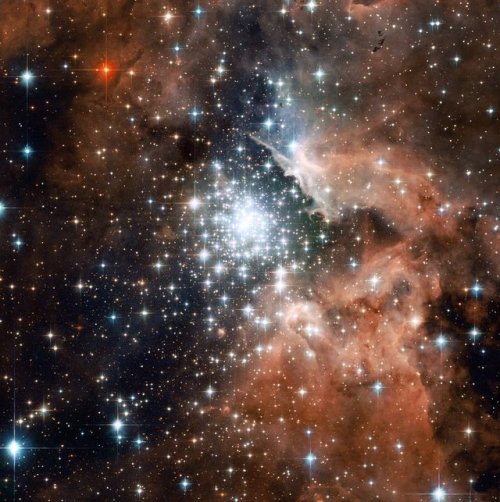
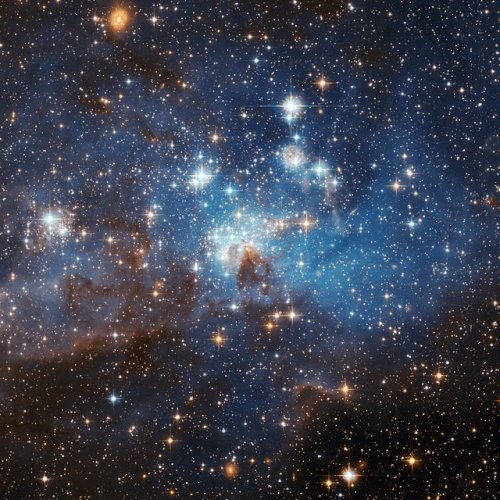
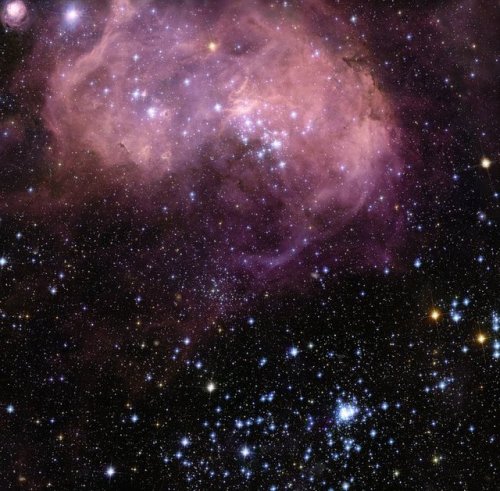
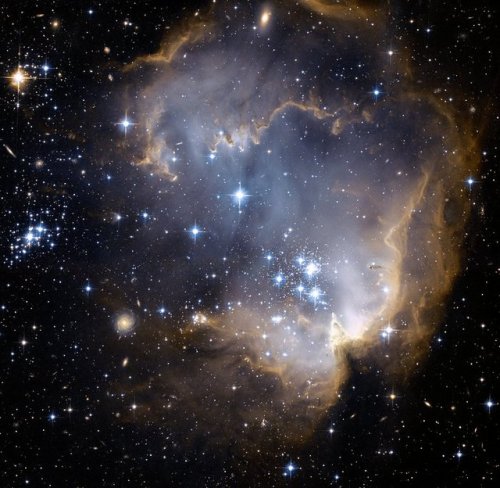
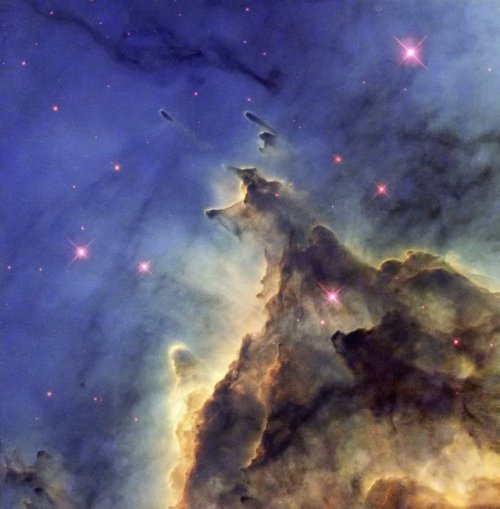
Star-forming regions amid gas and dust taken by the Hubble Space Telescope. (NGC 2467, NGC 3603, Star forming region in the Large Magellanic Cloud (LMC), N11, N90 and NGC 2174)
Image credit: NASA/ESA & Hubble
🍁🍂🎃🌄

Wistfully Country on Pinterest.
-
 0110100101 reblogged this · 3 years ago
0110100101 reblogged this · 3 years ago -
 ricardothehawk liked this · 3 years ago
ricardothehawk liked this · 3 years ago -
 dragonwhispe liked this · 3 years ago
dragonwhispe liked this · 3 years ago -
 liebestod-tchai reblogged this · 3 years ago
liebestod-tchai reblogged this · 3 years ago -
 liebestod-tchai liked this · 3 years ago
liebestod-tchai liked this · 3 years ago -
 maddy-cho reblogged this · 3 years ago
maddy-cho reblogged this · 3 years ago -
 plurdledgabbleblotchits reblogged this · 3 years ago
plurdledgabbleblotchits reblogged this · 3 years ago -
 sbsebek liked this · 3 years ago
sbsebek liked this · 3 years ago -
 billbocquet reblogged this · 3 years ago
billbocquet reblogged this · 3 years ago -
 thecosmicthought reblogged this · 3 years ago
thecosmicthought reblogged this · 3 years ago -
 whoknowswhereorwhen liked this · 3 years ago
whoknowswhereorwhen liked this · 3 years ago -
 angelboylove liked this · 3 years ago
angelboylove liked this · 3 years ago -
 brad1320love liked this · 3 years ago
brad1320love liked this · 3 years ago -
 livinglifeamok liked this · 3 years ago
livinglifeamok liked this · 3 years ago -
 ganymedesrocks reblogged this · 3 years ago
ganymedesrocks reblogged this · 3 years ago -
 ganymedesrocks liked this · 3 years ago
ganymedesrocks liked this · 3 years ago -
 iwillruletheuniverse reblogged this · 3 years ago
iwillruletheuniverse reblogged this · 3 years ago -
 ohfallingstar reblogged this · 3 years ago
ohfallingstar reblogged this · 3 years ago -
 bolajibadejo reblogged this · 3 years ago
bolajibadejo reblogged this · 3 years ago -
 moonstar-magic liked this · 3 years ago
moonstar-magic liked this · 3 years ago -
 carnalreincarnated liked this · 3 years ago
carnalreincarnated liked this · 3 years ago -
 hellfighter8 reblogged this · 3 years ago
hellfighter8 reblogged this · 3 years ago -
 sidusglacies reblogged this · 3 years ago
sidusglacies reblogged this · 3 years ago -
 mckitterick liked this · 3 years ago
mckitterick liked this · 3 years ago -
 flyingbooks42 reblogged this · 3 years ago
flyingbooks42 reblogged this · 3 years ago -
 flyingbooks42 liked this · 3 years ago
flyingbooks42 liked this · 3 years ago -
 themightymcspoon liked this · 3 years ago
themightymcspoon liked this · 3 years ago -
 mmaitena1thompson liked this · 3 years ago
mmaitena1thompson liked this · 3 years ago -
 la-delinquencia liked this · 3 years ago
la-delinquencia liked this · 3 years ago -
 virus-the-cyrus liked this · 3 years ago
virus-the-cyrus liked this · 3 years ago -
 tokina455 liked this · 3 years ago
tokina455 liked this · 3 years ago -
 jax-slater reblogged this · 3 years ago
jax-slater reblogged this · 3 years ago -
 carliteng liked this · 3 years ago
carliteng liked this · 3 years ago -
 dramaticbby liked this · 3 years ago
dramaticbby liked this · 3 years ago -
 botchienqueen reblogged this · 3 years ago
botchienqueen reblogged this · 3 years ago -
 umskiptingur liked this · 3 years ago
umskiptingur liked this · 3 years ago -
 muskkka liked this · 3 years ago
muskkka liked this · 3 years ago -
 e-lectricgirl liked this · 3 years ago
e-lectricgirl liked this · 3 years ago -
 melon-y reblogged this · 3 years ago
melon-y reblogged this · 3 years ago -
 fictionalshenanigans reblogged this · 3 years ago
fictionalshenanigans reblogged this · 3 years ago
My ambition is handicapped by laziness. -C. Bukowski Me gustan las personas desesperadas con mentes rotas y destinos rotos. Están llenos de sorpresas y explosiones. -C. Bukowski. I love cats. Born in the early 80's, raised in the 90's. I like Nature, Autumn, books, landscapes, cold days, cloudy Windy days, space, Science, Paleontology, Biology, Astronomy, History, Social Sciences, Drawing, spending the night watching at the stars, Rick & Morty. I'm a lazy ass.
222 posts
